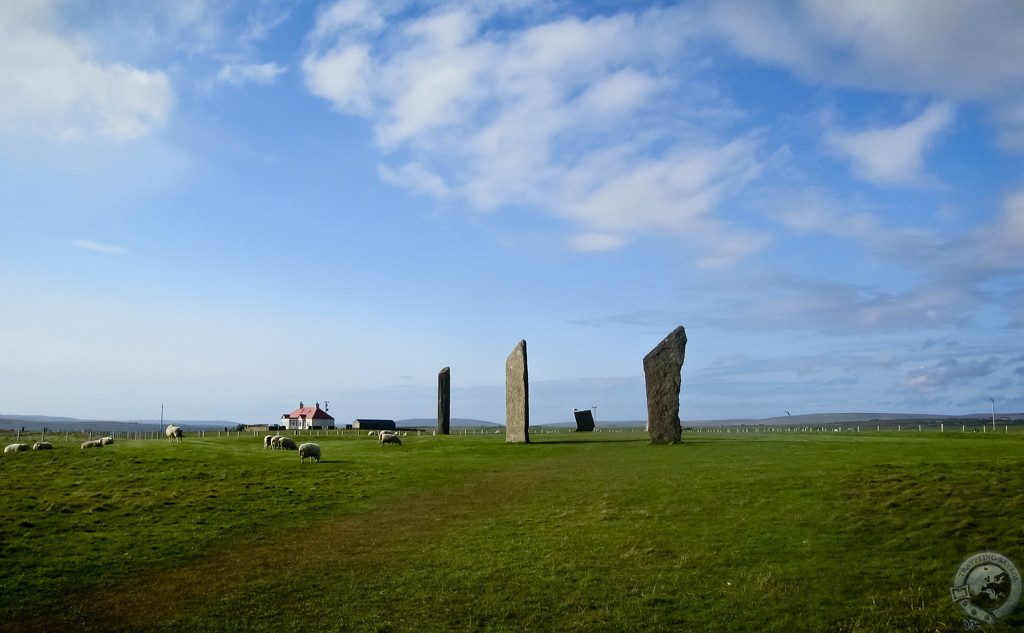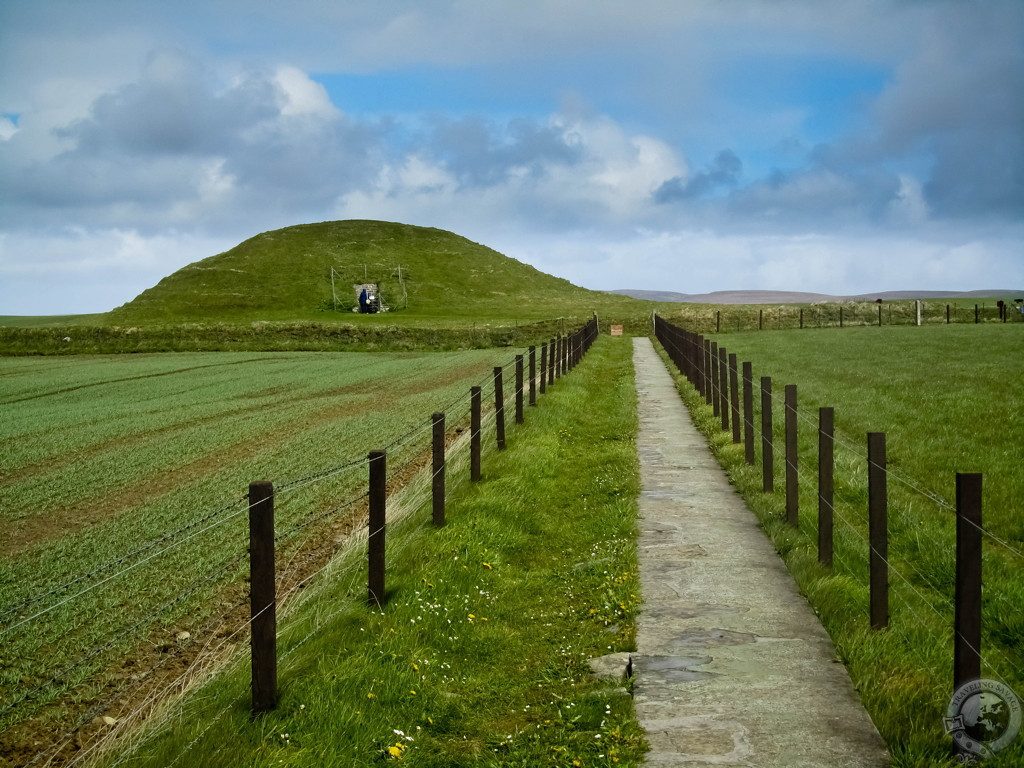I rolled off the ferry at Stromness and entered a world of memories. There was Julia’s Bistro and the food co-op where Sarah and I bought Tennent’s tallboys on our honeymoon. I passed a road on the way out of town that led up to Thira, a B&B we stayed at in 2006 and 2007 with wide views of Hoy. The Flattie Bar, the Ferry Inn – so little had changed.
Then, the Orkney countryside.
All soft rolling pasture land rife with sheep and scores of spindly white and black lambs at this time of year. The old bones of stone crofts in various states of disrepair whistle in the relentless wind. There are thick bars of light and thin bands of sweeping rain and scudding wisps of clouds. The sea hammers raw cliffs in every direction.
The nature of nature on Orkney is enough to leave anyone spellbound and dizzy. That’s when I notice massive slabs of standing stone dotting the landscape. They reach like stoney fingers toward the sky, seemingly at random, all over Orkney’s mainland. Their appearance fills me with the most alien sensation. Who raised them? How? What do they represent?
I wonder. I wonder.
The Standing Stones of Stenness rear up from the turf among sheep busily munching on grass. The view is incongruous. I have a feeling somewhere between laughing and crying, but we continue on to The Bu at Orkney Crofts before it comes into being. There used to be more stones. Maybe the Vikings pulled some down, maybe a few were struck by lightning. What remains is like the faded words of an ancient love letter. Will we ever get to read it?
Later, my dad and I return into the glorious Orkney sun and pass between two large lochs to find the Ring of Brodgar jutting from a hill like a gargantuan bear trap. This is perhaps my favorite place in Scotland, a beautiful inscrutable ring of stones. I am looking in on a private thing – the meaning of this wonder of the world was never meant as a message to the future. I like it better this way. Sometimes the world feels so drained of mystery; here is a monument of surpassing greatness that easily defies conjecture. When I touched the stones, just as I did in 2006, there was a feeling I couldn’t name similar to experiencing aromas in whisky I detect but cannot label.
Not a mile from these two monuments rests Maeshowe, one of the finest and most ancient chambered cairns in all the world. It looks like a hill in the middle of grazing cattle and sheep, but our guide leads us down a three-foot tall nine-meter long passage to reveal a burial cairn. Massive lintel stones weighing up to nine tons are built into the walls; the stones were quarried seven miles away. How? Why? This place was old to the Vikings who broke in and effectively carved runic graffiti on the walls. On the day of the winter solstice, the sun shines through the opening of Maeshowe and illuminates the chamber.
The constant wind rattles the wonder around in my head like marbles. A new find near the Ring of Brodgar has historians and archaeologists buzzing with excitement. They’re calling it a temple complex. What else lies hidden beneath Orkney’s earthen veil?
A black calf follows me down the path away from Maeshowe. He has yellow tags with numbers punched through his floppy ears. He looks at me with gentle eyes. And there’s that feeling again.
I wonder.


